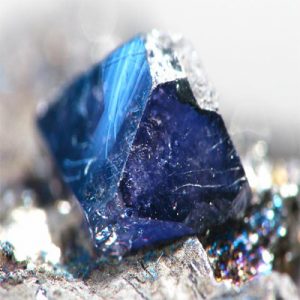Scorodite
Scorodite is not a rare mineral, but is very rare as a faceted gem. Gems are very small since gem quality crystals are typically very small. Scorodite gems may also rarely display a color change from green to violet under different types of light.
There are numerous occurrences of Scorodite, typically in small amounts. Some localities for well-crystallized material are: in Germany, from Schwarzenberg, Saxony, and in the Clara mine, near Oberwolfach, Black Forest. At Horní Slavkov (Schlaggenwald), Czech Republic. From Lölling, Carinthia, Austria. Found at a number of places in Gwennap, Calstock, and elsewhere in Cornwall, England. Occurs at Djebel Debar, Qacentina (Constantine), Algeria. Very large crystals from Tsumeb, Namibia. Large crystals from Antonio Pereira, Minas Gerais, Brazil. In Mexico, large crystals from the El Cobre mine, Aranzazú, Concepcíon del Oro, Zacatecas, and in the Ojuela mine, Mapimí, Durango. In the USA, in Utah, an ore mineral at Gold Hill, Tooele County, and in the Tintic district, Juab County; and from the Majuba Hill mine, Antelope district, Pershing County, Nevada. At the Kiura mine, Oita Prefecture, Japan, large crystals. From Broken Hill, New South Wales, Australia.
| Category: | Arsenate minerals |
| Chemical Formula: | Fe3+AsO4•2H2O |
| Hydrated Iron Arsenate | |
| Molecular Weight: | 230.80. gm |
| Composition: | Iron | 24.20 % | Fe | 34.60 % | Fe2O3 |
| Arsenic | 32.46 % | As | 49.79 % | As2O5 | |
| Hydrogen | 1.75 % | H | 15.61 % | H2O | |
| Oxygen | 41.59 % | O | |||
| 100.00 % | 100.00 % | = TOTAL OXIDE |
| Crystallography: | Orthorhombic – Dipyramidal |
| Crystal Habit: | Crystals pyramidal {111}, tabular [001], or prismatic [010], with large {111}, {101}, {201}, {001}, many other modifying forms, to 5 cm. Commonly as crystalline crusts; may be porous, sinterlike, earthy, massive. |
| Twinning: | None |
| Cleavage: | {201} Imperfect, {100} Poor, {001} Poor |
| Fracture: | Sub-Conchoidal, Splintery |
| Tenacity: | Brittle |
| Moh’s Hardness: | 3.5 – 4.0 |
| Density: | 3.27 (g/cm3) |
| Luminescence: | None |
| Radioactivity: | Not Radioactive |
| Other: | Soluble in acids; decomposed in strong alkalies. Alters to limonite. |
| Color: | Pale leek-green, grayish green, liver-brown, pale blue, violet, yellow, pale grayish, colorless; may be blue-green in daylight but bluish purple to grayish blue in incandescent light; in transmitted light, colorless to pale shades of green or brown. |
| Transparency: | Translucent to Semi-Transparent |
| Luster: | Vitreous to Subadamantine, Subresinous |
| Refractive Index: | 1.741 – 1.820 Biaxial ( + ) |
| Birefringence: | 0.027 – 0.036 |
| Dispersion: | Relatively Strong; r > v |
| Pleochroism: | Weak, typically faint; blue-violet to blue-green |


